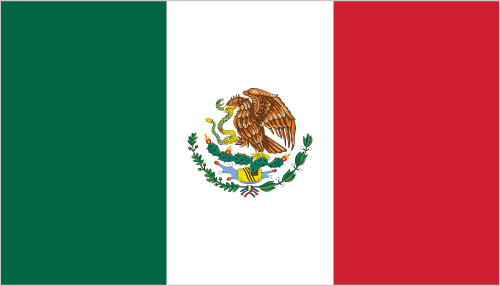Global GDP this year
$ 16,678,857,369,019
(combined GDP of all countries, from Jan. 1 2019 up to now)
2019 FORECAST:
What is GDP
GDP stands for "Gross Domestic Product" and represents the total monetary value of all final goods and services produced (and sold on the market) within a country during a period of time (typically 1 year).
[more...]
[more...]
TOP COUNTRIES BY GDP (2017 NOMINAL GDP)
Global GDP (Gross World Product) 1960-2017
Sources:
- World Bank - World Bank national accounts data, and OECD National Accounts data.
- World Population Prospects: The 2019 Revision - United Nations Population Division
GDP Growth Rate, World (1961-2017)
Yearly Global GDP Growth Rate (%)
Sources:
- World Bank - World Bank national accounts data, and OECD National Accounts data.
- World Population Prospects: The 2019 Revision - United Nations Population Division
Global GDP by Year
GDP of all countries of the world combined by year, from 1960 to the latest official figurespublished by the World Bank. GDP Real refers to GDP adjusted for inflation (base year: 2010), or "Constant GDP"; GDP Growth refers to Real GDP Growth Rate; Per Capita shows Real GDP divided by total population for the same year; GDP Nominal is GDP at current prices (not adjusted for inflation); Pop. Change refers to the percentage change in world populationfrom the previous year. Sources include: World Bank, United Nations.
Sources:
- World Bank - World Bank national accounts data, and OECD National Accounts data.
- World Population Prospects: The 2019 Revision - United Nations Population Division
GDP by Region
| Region | GDP (nominal, 2017) | GDP growth | Share of World GDP |
|---|---|---|---|
| Africa | $2,253,387,990,527 | 3.07% | 2.78% |
| Asia | $28,964,074,012,908 | 4.75% | 35.79% |
| Europe | $20,266,185,923,246 | 2.36% | 25.04% |
| Latin America and the Caribbean | $5,391,967,806,492 | 1.78% | 6.66% |
| Northern America | $21,132,514,175,449 | 2.30% | 26.11% |
| Oceania | $1,565,397,861,708 | 2.08% | 1.93% |
GDP: sources and methodology
GDP Data
- World Bank GDP - World Bank national accounts data, and OECD National Accounts data files.
- USA: U.S. Bureau of Economic Analysis (BEA)
- China: National Bureau of Statistics of China (NBS) - The national accounts of China started at the beginning of the1950s. In 1952 the NBS was established. In 1956 NBS adopted the Material Product System (MPS) that was devised and used by the Soviet Union. Between 1985 and 1992, through a series of steps and arrangements, China transitioned from MPS to GDP, as the State Council of China (SCC) approved the establishment of a SNA (System of National Accounting using GDP to measure the national economy.
- GDP and spending - Gross domestic product (GDP) - OECD Data
- World Economic Outlook (April 2019) - IMF -International Monetary Fund
GDP Methodology
- Currency and magnitude
All GDP figures are expressed in US Dollar (US $, USD) and in single dollar units ($1=$1), not in thousands, millions, or billions. - Global GDP
World GDP (or "Global GDP" or "GWP, Gross World Product") is the combined GDP of all countries in the world. Global GDP is equivalent to Global GNI, or Global GNP, since all of these will provide the same result when combining all production worldwide. - Live Counter
The live counter shows estimated figures for Global GDP during the current year (from January 1, 2019 up to the current moment) based on the latest forecast released by the IMF and World Bank as elaborated through Worldometer's RTS algorithm. - Global GDP
The chart for Global GDP vs. World Population uses Real GDP figures. - Global GDP Growth
As with each individual country's GDP Growth Rate figures, it is calculated using inflation adjusted GDP ("Real GDP" or "Constant Price GDP") at 2010 prices. - GDP Year
GDP figures (nominal, real, growth rates) are based on the latest data released. Currently, GDP figures are finalized for the year 2017, whereas estimates are available for 2018 and 2019. Worldometer publishes only final data in tables and charts.
Population Data
- The United Nations Population Divisionof the Department of Economic and Social Affairs every two years calculates, updates, and publishes estimates of total population in its World Population Prospects series. These population estimates and projections provide the standard and consistent set of population figures that are used throughout the United Nations system.
The World Population Prospect: the 2019 Revision provides the most recent data available (released in June of 2019). Estimates and projected world population and country specific populations are given from 1950 through 2100 and are released every two years.
Data underlying the population estimates are national and sub national census data and data on births, deaths, and migrants available from national sources and publications, as well as from questionnaires. For all countries, census and registration data are evaluated and, if necessary, adjusted for incompleteness by the Population Division as part of its preparations of the official United Nations population estimates and projections.






















No comments:
Post a Comment
Ameya jaywant narvekar